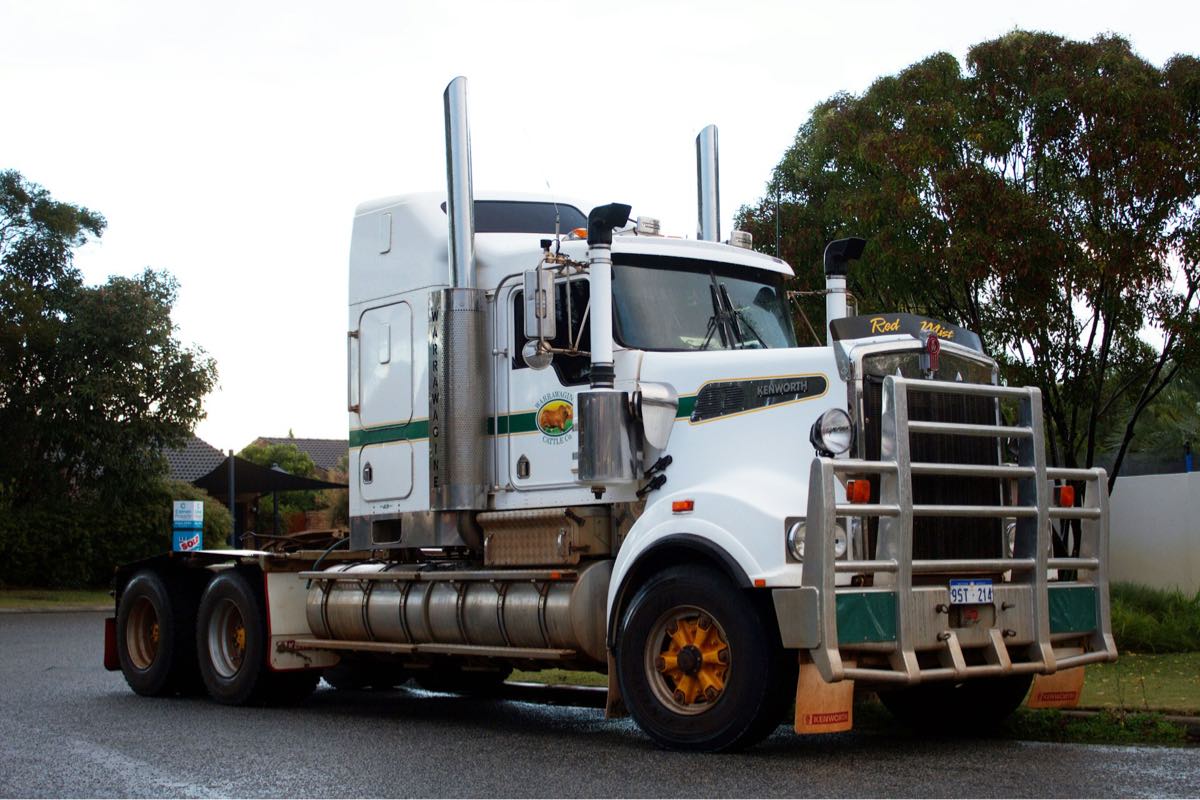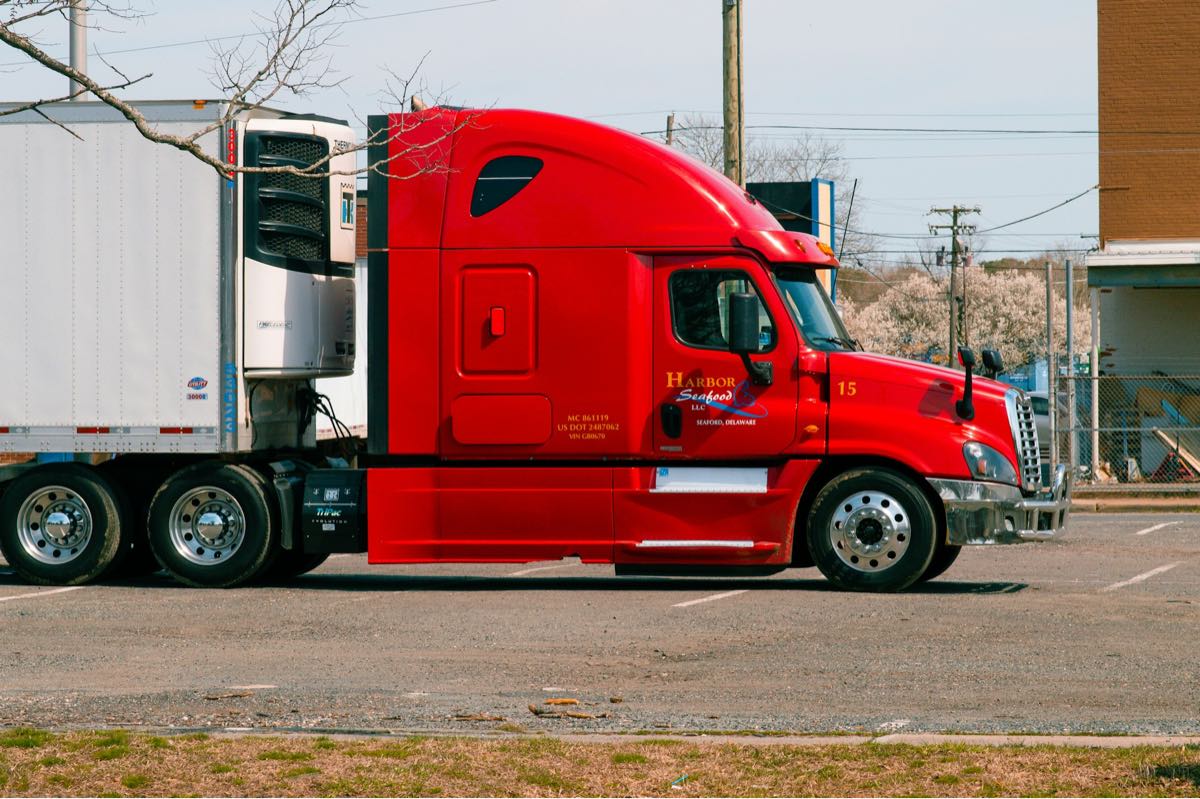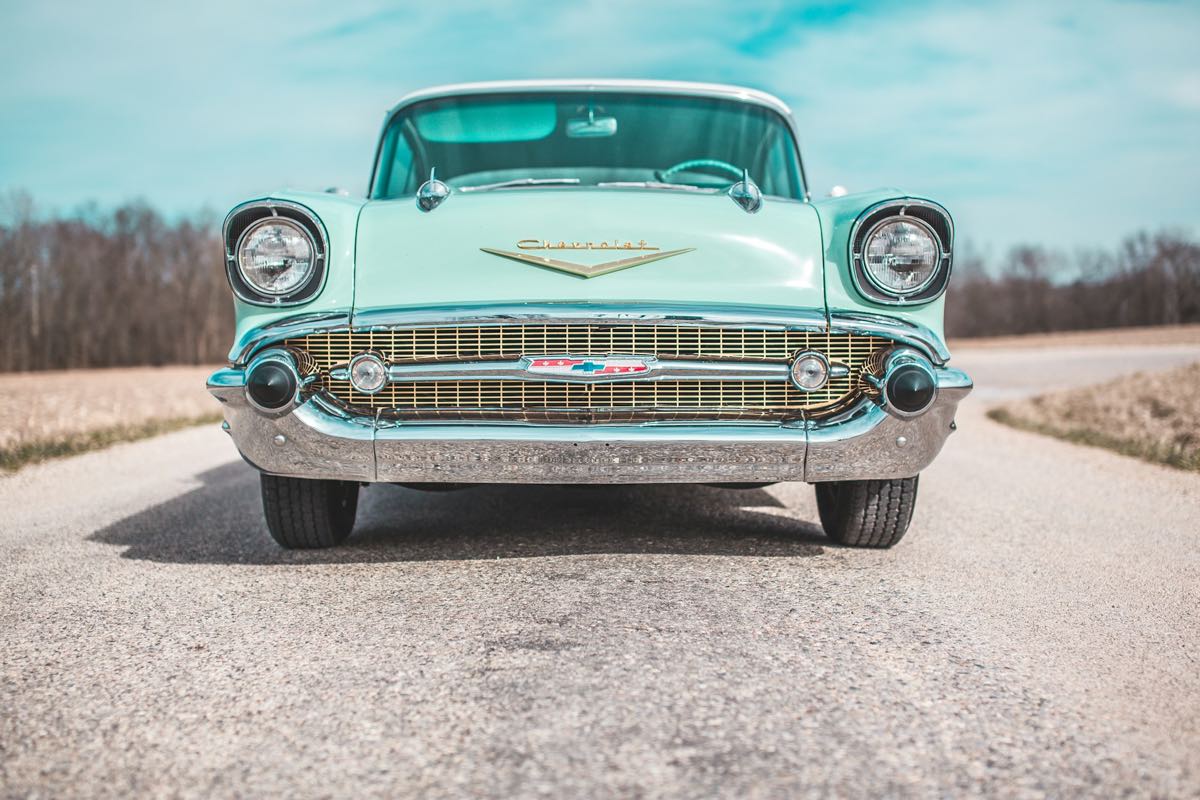Classic cars are more than simply automobiles; they are priceless relics of the history of the automotive industry, encapsulating the very essence of design and engineering from the eras in which they were produced. The acquisition of a classic car is a dream come true for a great number of collectors and enthusiasts. On the other hand, the difficulty frequently emerges when it comes to shipping these valuable assets. It is essential to have a thorough awareness of the intricacies involved in classic car shipping, regardless of whether you have recently bought a classic masterpiece or are merely transferring your beloved asset to a new place. This blog article takes a deep dive into the subject of shipping a classic car inside the United States, providing you with important advice and insights to guarantee that your vehicle reaches at its destination in a secure and unharmed state.

Classic cars have a special position in the world of automobiles because they represent not only the advancement of technology and the brilliance of design, but also the preservation of cultural legacy and the sentimental attachment to the past. The purpose of this section is to get into the subtleties of what makes a vehicle a “classic,” investigating the criteria and categories that define these autos from their contemporaries. When enthusiasts have a greater awareness of these distinctions, they are better able to comprehend the value, obligations, and joys that come along with being the owner of a piece of automotive history.
What Qualifies as a Classic?
In addition to their age, classic cars are distinguished by their personality, style, and historical significance. Even though the definition of “classic” might vary, cars that are 25 to 50 years old are often included in this category. This section examines the standards by which different clubs and organizations classify their vehicles as classics, emphasizing how crucial these standards are for registration and insurance purposes. These standards frequently take into account elements like model, condition, and rarity, all of which go into making an automobile a classic. It is imperative that owners and enthusiasts comprehend these requirements in order to guarantee accurate recognition and preservation of their automobiles.
The Significance of Categories
The distinction between classic, antique, and vintage vehicles goes beyond mere terminology. These groups have a big impact on what kind of maintenance, insurance, and registration the car needs. For example, automobiles classified as antiques are often those that are 50 years or older, and because of their age and rarity, they frequently need more specialized maintenance and insurance coverage. Vintage vehicles, generally from the time period between the World Wars, have their own distinctive features and care requirements. Any owner of a classic car or potential buyer must be aware of these differences as they impact not just the everyday use of the vehicle but also its cultural and historical value.
Every category explains how an automobile is cared for and safeguarded, as well as how the public and collectors alike see it. It is possible to improve the ownership experience and ensure that classic cars are appreciated and conserved for next generations by acknowledging and honoring these characteristics.

In order to ensure that a classic car gets at its destination safely, shipping it involves a complex process that requires careful planning and close attention to detail. In order to reduce risks and guarantee a seamless transition, this trip entails choosing the best transport service for your classic car based on its specific requirements and getting it ready for travel. Whether you’re a novice or an experienced collector, knowing these procedures is essential to a good shipping experience.
Choosing the Right Transport Service
The selection between open and enclosed auto transport services stands out as a crucial one when choosing the best method of shipping a classic car. Although open transit may be less expensive, the car is left vulnerable to the weather and potential road debris. Conversely, covered transportation provides enhanced safeguarding from inclement weather and road hazards, rendering it a more desirable choice for expensive or fragile cars.
Preparing Your Classic for Transport
As part of the shipping procedure, getting your classic car ready for shipment is essential to reducing risks and safeguarding its condition. Owners should carefully follow a few essential steps to make sure their car is prepared for the journey ahead. First, you should fill the gas tank only about a fourth of the way up. This action lowers the weight and lessens the possibility of leaks happening while being transported. To further avoid mechanical problems that can occur during shipment, make sure that all maintenance is current. Making sure the battery is securely fastened, inspecting for leaks, and checking that the tires are correctly filled are all crucial.

Documentation: Take close-up pictures of your vehicle from various viewpoints to record its present state. These pictures act as documentation of the car’s condition prior to shipping and are very helpful in the event of disagreements or insurance claims.
Secure Loose Items: The car’s exterior and/or interior accessories and parts should all be fastened or uninstalled. This covers aftermarket adjustments, detachable components like antennae, and personal belongings within the cabin. Unnecessary issues might arise from loose goods becoming missiles or being lost during transportation.
Lock the Car: Make sure the automobile is locked once it is on the trailer to avoid theft or door openings while the vehicle is being transported. The driver will still need to get the keys to the car from you.
Disable the Alarm: Make careful to turn off the alarm system if your automobile has one. For the transport driver, an activated alarm can be a major annoyance and distraction.
Check for Leaks: Check for any fluid leaks in the vehicle. Cars that leak a lot could be refused by shipping firms as they could be dangerous to move.
Emergency Kit: While it’s not always required, some owners decide to have a modest emergency kit in their car. This might include supplies like a jack, basic tools, and a spare tire in case the automobile needs to be moved by someone who isn’t familiar with its peculiarities.
By taking these precautions, you can make sure that your vintage automobile is ready for transportation, lowering the possibility of damage and guaranteeing a seamless pickup and delivery experience. Not only does careful planning protect your car, but it also contributes to your overall comfort level during the transportation procedure.

The nuances are important and the risks are great when shipping a classic car. The procedure might be intimidating, particularly for individuals who have never done it before or who view their classic cars as priceless assets. Understanding the complexities of car transportation is crucial to ensuring your classic car reaches its destination safely. These pointers will help you navigate the main stages of the procedure, from choosing the best shipping provider to comprehending insurance coverage. These are the things that every owner of a classic car needs to know in order to safeguard their investment while it is being transported.
- Research and Trust: Selecting a reliable and knowledgeable shipping provider is essential. This is the part where you do your homework. Find businesses that have received great ratings, get recommendations from other auto enthusiasts, and check their credentials. A business that focuses on classic cars will recognize the importance of your car and the upkeep it needs. Their service is important, but what really matters is peace of mind.
- Timing and Booking: The shipping procedure may be greatly impacted by the time of your reservation. Arranging and reserving your vehicle’s transportation early in advance might help you avoid needless stress. A larger variety of shipping choices and generally a more attractive pricing are made possible by early preparation. For the greatest results, stay away from peak times and try to be flexible with your shipment dates.
- Insurance Coverage Clarity: It is important to comprehend the specifics of insurance coverage when in transit. Make sure that the shipping company offers full insurance to cover any damage sustained while in route. Get a copy of their insurance coverage and make sure the value of your classic car and your expectations are met. In the unusual case of an occurrence, knowing the scope of coverage adds another level of security and assurance.
- Direct Communication: Maintaining communication with the transport driver and / or the transport coordinator guarantees that you are informed about the status of your car. Having direct contact with the driver enables you to plan ahead for the arrival of the car and can also provide you real-time information. Additionally, it builds rapport, which is important for quickly resolving any issues. This degree of participation guarantees that you stay informed at every stage of the process.
- Preparation for Transport: Your classic car can avoid damage and travel smoothly if it is properly prepared for transfer. This include cleaning your automobile (so you can quickly see any damage before and after transportation), taking out personal belongings, tying down loose components, and taking pictures of your car to record its state. Share any unique instructions you may have for the maintenance of your automobile with the shipping provider. Being organized is essential to preventing any problems or disagreements over the state of your car.
- Choice of Transport Method: Selecting between covered and open transportation is essential for your classic car’s protection and safety. While covered shipping provides better protection from the weather and potential road debris, open transport could be more economical. In cases where classic automobiles are extremely valuable or rare, the extra cost of enclosed transportation justifies the added assurance it offers.
- Delivery Inspection: When your classic car is delivered, thoroughly check it in front of the driver. Verify the documentation and pre-transport images with the vehicle’s condition. Any errors or damage must be identified and reported right away. This process guarantees that any claims are supported by unambiguous proof and is essential for insurance reasons.
Owners of classic cars may confidently handle the challenges of car shipping by adhering to these seven essential suggestions. Your classic car will arrive in perfect condition thanks to every stage of the safe and effective transportation process.

Factors Influencing Shipping Costs
Car owners should take into account a variety of considerations since the cost of transporting a classic car varies greatly and is not a fixed amount. The vehicle’s required travel distance is the most important of them. In general, the cost increases with distance. This is due to the fact that lengthier routes may need more complicated logistics, more fuel, and longer driver hours—particularly when traversing congested urban areas or state borders. The vehicle’s condition also has a significant impact on how much shipment will cost. The cost may increase if more resources are needed for loading and unloading classic cars that are inoperable or require special treatment.
The kind of transportation service used is another important consideration. Compared to open transport choices, enclosed transport services are more expensive while providing better protection from the weather and potential road debris. If your classic car is valuable or very delicate, enclosed transportation is usually advised since the extra security and peace of mind it offers make the extra expense worth it. Moreover, the season might have an impact on shipping expenses. Car shipping services are in great demand between January and the summer, when prices tend to rise. Demand for these services varies seasonally. By scheduling your shipping at off-peak times, you may save a lot of money.
Distance: The cost increases with the distance the automobile needs to be shipped. This is because there might be tolls along the road, more work, and more fuel usage.
Vehicle Condition: Special personnel and equipment are needed for cars that cannot be driven onto the transporter by themselves, which might raise the cost.
Type of Transport: Although it costs more than open transportation, enclosed transportation provides more security. The car’s worth and the owner’s preference for protection over expense should be taken into consideration when choosing between the two.
Seasonality: Seasons can have an impact on shipping costs, which typically peak in the summer and January. It may be more economical to schedule your transportation during slower times of the year.
When preparing for the shipping of a classic car, each of these elements needs to be carefully taken into account. Car owners may balance their demands for safety, speed, and affordability by knowing how each component affects the final price.

In order to transport a classic car, great attention and planning are required prerequisites. You are able to guarantee that your classic car will reach at its destination without any damage if you have a thorough awareness of the special requirements of your vehicle, select the appropriate transport provider, and thoroughly prepare for the journey. It is important to keep in mind that the objective is not only to relocate a car but rather to preserve a piece of automotive history.
Ship A Car, Inc. stands out as the best option for moving your classic car because of their extensive experience in the industry. We provide an unrivaled service for transporting your classic car across the United States, including Hawaii and Alaska, thanks to our transport advisers who are committed to their work and deeply educated about the industry. Because of our dedication to perfection, we guarantee that your vehicle will receive the attention and care that it merits. Dial (866) 821-4555 right now to discuss the requirements for transporting your classic car.
Q1: How do I choose the right auto transport company for my classic car?
A1: It is important to investigate the company’s reputation, experience in dealing with classic cars, insurance coverage, and feedback from previous service customers. Search for businesses that offer services that are specifically tailored to classic cars, such as Ship A Car, Inc.
Q2: What’s the difference between open and enclosed auto transport?
A2: Enclosed auto shipping provides total protection from external forces, making it the preferable alternative for classic cars. Open auto transport exposes the vehicle to the weather and road debris, while enclosed auto transport gives complete protection.
Q3: How much does it cost to ship a classic car?
A3: It is dependent on the distance, the condition of the automobile, the mode of transportation, and the season. The most effective method for obtaining an accurate quotation is to get in touch with a reputable car shipping company such as Ship A Car, Inc. for a quote.



